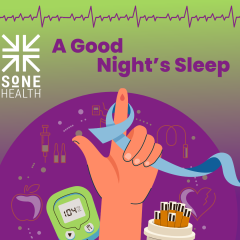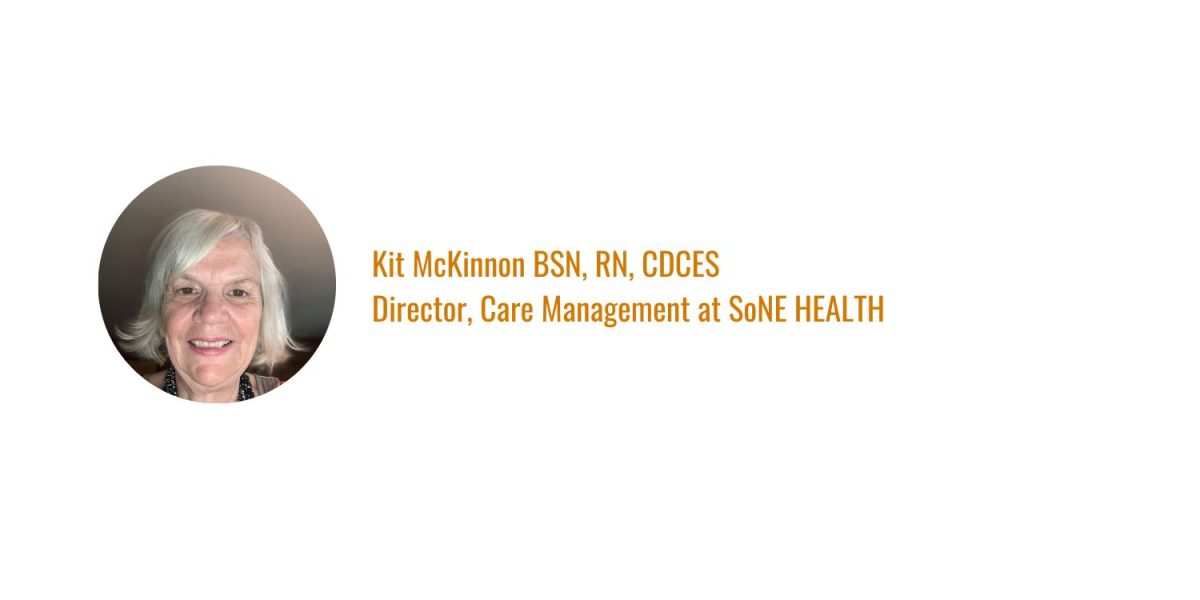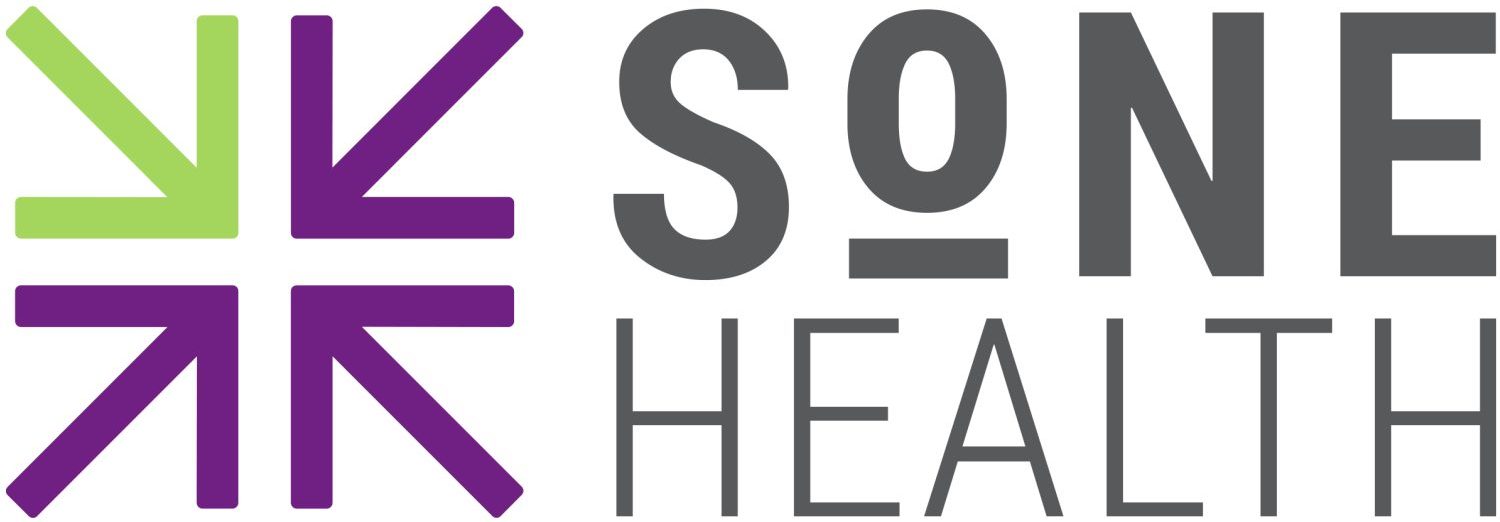By: Kit McKinnon BSN, RN, CDCES
Director, Care Management at SoNE HEALTH

The discovery of insulin in 1922 saved and extended the life of people who developed Type 1 Diabetes (T1D). A second historic breakthrough in diabetes management is the continuous glucose monitor (CGM). The CGM is a medical device that provides glucose level data “continuously”, increasing the self-care ability of people with diabetes to act when numbers are too high or too low. These wearable, automated devices with built-in algorithms, can restore confidence and self-assurance for people living with diabetes, a chronic condition with no cure.
One of the most frustrating aspects of diabetes is the difficulty of keeping blood sugar or blood glucose in a safe range, not too high and not too low. The basic factors involved in the balancing act are food, exercise, and diabetes medicines, either insulin or pills. Consider, that for people who don’t have diabetes, the balance is completely automatic with little or no conscious thought or attention. The most common side effect of taking insulin is hypoglycemia. Hypoglycemia also referred to as low blood glucose or an insulin reaction can be very dangerous.[i] Activities that we take for granted, like a stable blood glucose level and a good night’s sleep are a difficult balancing act for people with diabetes.
I met B. for the first time when he reluctantly agreed to schedule an appointment after his primary care provider (PCP) suggested he meet with a Certified Diabetes Care and Education Specialist (CDCES). The PCP called to give me the relevant background. B. was in his late forties, with a 40-plus year history of T1D, diagnosed at the age of nine. Formerly known as juvenile diabetes, T1D, is an autoimmune disease that destroys the cells that produce insulin. People with T1D require daily injections of insulin for life.
A tall man with bright blue eyes and a muscular frame stared down at the wooden table that separated our two hard wooden chairs. The office is quiet, clutching a paper cup of cold water, he looks up suddenly, placing the cup carefully on the table, he leans forward to speak, describing a terrifying scene that has left him shaken and afraid. He is in bed, in a restless and irritable sleep, he feels his heart pounding as he wakes up suddenly from a nightmare. Strange people are in his bedroom, and a crowd of emergency medical people in bright blue uniforms surround his bed. One of the emergency medical technicians (EMT) was bent over the bed, close to his ear, yelling at him to wake up. He struggles, losing his breath as he chokes and gags on the thick, sugary gel the EMT has squirted in his mouth to get his blood sugar up.
His wife called 911 for the third time that month, afraid when he became belligerent and combative. She is unable to get through to him to drink a glass of juice, despairing and out of options she dials 911 for help. His vulnerability is exposed, and he is embarrassed when emergency service vehicles with flashing red lights frequently are called to his home in the “middle of the night”. His expression flat and sorrowful, he tells me having T1D, with frequent high and low blood sugar swings, has cost him several relationships. Nocturnal hypoglycemia, defined as a low blood sugar episode in the middle of the night is ruining his ability to get restful sleep, impacting his mental health, and the relationship with his wife.
A breakthrough solution to better manage the very real and common acute complication of “night-time hypoglycemia” is a wearable device called a Continuous Glucose Monitor. Instead of finger sticks the small sensor inserted just below the skin in the upper arm or belly measures glucose levels in the interstitial fluid of the body, 24 hours a day. The CGM estimates the level every few minutes and tracks the trend (high or low). When the device algorithm detects blood glucose is trending outside of a safe pre-determined and individualized range, the loud built-in alarm and vibration feature activates automatically waking the person up. CGM devices are a boon to people with diabetes and night-time lows.
A practical solution to his problem was identified, a prescription for one of the first CGM devices on the market got his life back on track. After 6 months of getting a good night’s sleep, with no 911 calls, he was feeling confident in his ability to customize the alarms on the device to give him enough lead time to self-treat.
Since the first regulatory approvals for AI-based technology were granted back in 2015, people with diabetes can add AI-based tools, such as biosensors for continuous glucose monitoring systems to alert patients of rising or rapidly falling blood glucose levels. People with diabetes use the wearable sensor inserted into the upper arm that transmits blood sugar data to a smartphone to see how certain foods, as well as sleep and stress, affect glucose levels. Once used primarily for insulin-dependent T1D, CGM use is expanding to make more people eligible for the devices and sensors to be covered by Medicare and Commercial insurance.[ii]
November is National Diabetes Month, readers who provide care for people with diabetes or who have diabetes may want to consider the benefits of a CGM as compared to finger-stick blood sugar checks. With expanded insurance coverage the technology can benefit many more people. To learn more about the practical applications of the CGM on diabetes self-management go to: timeinrangetipsheet_2020.pdf (diabeteseducator.org).

________________________________________________
[i] Funnell, Martha Mitchel. Life with Diabetes (Funnell, 2020)
[ii] AARP The Magazine October/November 2023 p. 50

